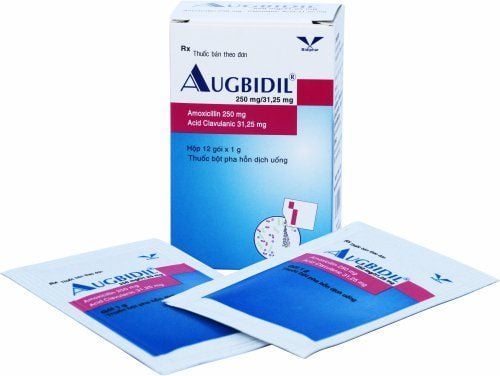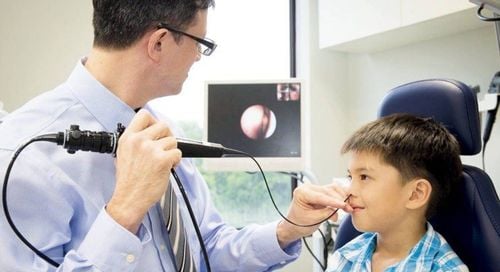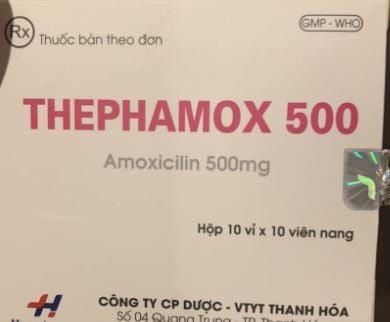This is an automatically translated article.
The article was professionally consulted with Doctor CKII Nguyen Van Thai - Department of Medical Examination & Internal Medicine - Vinmec International General Hospital Da Nang.Ear - nose - throat are organs prone to injury due to traffic accidents, external forces,... Ear, nose and throat injuries should be treated quickly to avoid life-threatening and avoid affect the patient's esthetics.
1. What are the characteristics of ENT trauma?
1.1 Anatomy Skin: Easily crushed, peeled off or contracted; The walls of the organs of the ear - nose - throat: are easily broken, broken, causing tracheal perforation or collapsed, falling out in patches due to complicated wounds; Mucosal: Easily dissected, necrotizing inflammation; Interconnected ear - nose - throat cavity: Easy for infection to spread from one cavity to another when traumatized; The location of the ear - nose - throat is located near important organs such as the brain, meninges, nerves, large blood vessels,... 1.2 Physiologically, the patient is prone to shock due to injuries near the skull; Should give first aid immediately to avoid bleeding, suffocation; Attention should be paid to the restorative function of the ear - nose - throat when administering first aid or surgery; Attention should be paid to the aesthetic issue. When dealing with ear - nose - throat injuries, it should be solved in all 3 aspects: Keeping the patient's life; keep the functions of hearing - smell - speaking, swallowing; meet aesthetic requirements.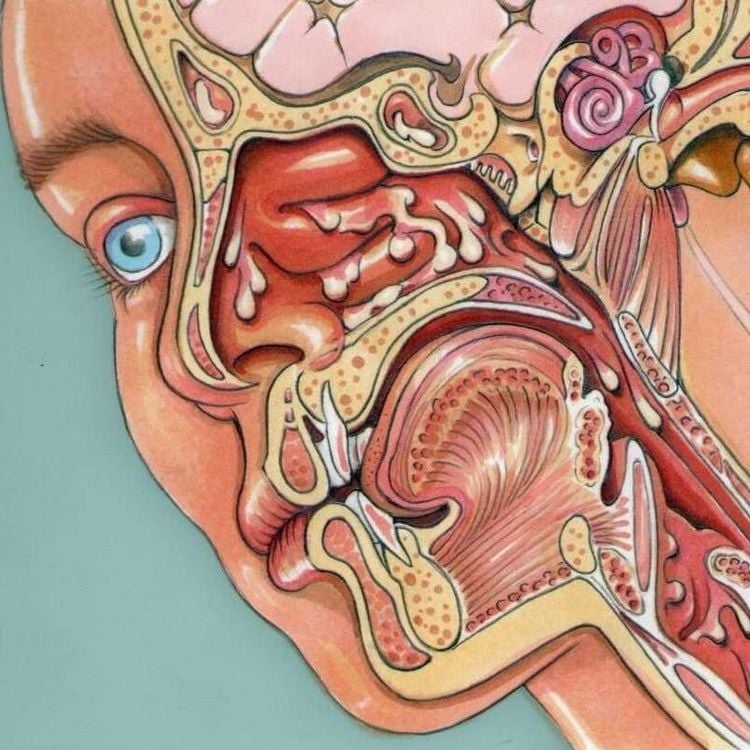
2. Ear Injury Treatment
There are many different types of ear injuries, and each type will require appropriate treatment. Specifically:2.1 Trauma due to pressure The cause of injury is usually: Explosive waves (bombs, cannons, grenades,...); middle ear damage (displacement of the hammer anvil, tearing of the eardrum); damage to the inner ear (bleeding, damage to the organ of Corti,...). Patients with pressure ear trauma experience symptoms such as sharp pain in the ear, hearing loss, ringing in the ears, dizziness, and possibly tearing, bleeding, and swelling of the eardrum.
In this case, the diagnosis should be made by: Examining the patient with a history of pressure trauma, reviewing clinical symptoms, and measuring audiometry. The treatment is as follows:
People with a torn eardrum: The doctor will clean the ear canal and place an antibiotic wick; Monitor otitis media and mastoiditis; Give the patient vitamin A, vitamin B, combined with more rest. 2.2 Fracture of the stony bone The stony bone is located deep in the skull, so it is usually a blunt trauma. Trauma to the bone fracture is very dangerous because it can cause complications of meningitis after many years, easily leaving sequelae on hearing, balance, psychological and sympathetic nervous function.
The cause of bone fracture can be a fall, a labor accident, a car accident, being hit on the head, being hit with a hard object in the occipital, temporal bone... Symptoms of the patient are ear bleeding (blood that leaks or collects in the outer ear canal, red); cerebrospinal fluid (fluid that is clear, oozing, or dripping from deep in the ear canal, possibly with blood); dizzy; hearing loss; may have peripheral facial paralysis; Examination of the ear and mastoid area shows bruises in the mastoid area, the ear canal is torn and bleeding, the eardrum is bulging and blue-violet color,...
With a patient with a broken stone bone, the doctor needs to make a diagnosis first. , learn the mechanism of injury, the trauma context (fall or hit), the location of the injury (temporal skull, occipital, mastoid,...) and review the clinical symptoms. The doctor may do a CSF or X-ray for the patient if further evaluation is needed.
Treatment:
People with bleeding in the ear: Need to clean the ear canal thoroughly and then put an antibiotic wick; People with cerebrospinal fluid draining into the ear: It is necessary to clean the ear canal thoroughly, then put an antibiotic wick, a sterile bandage. Need to avoid causing infection from outside; Give the patient antibiotics for meningitis and monitor the cerebrospinal fluid; If the patient has mastoiditis, mastoidectomy is needed. If the patient has labyrinthitis, it is necessary to drill and drain the labyrinth.
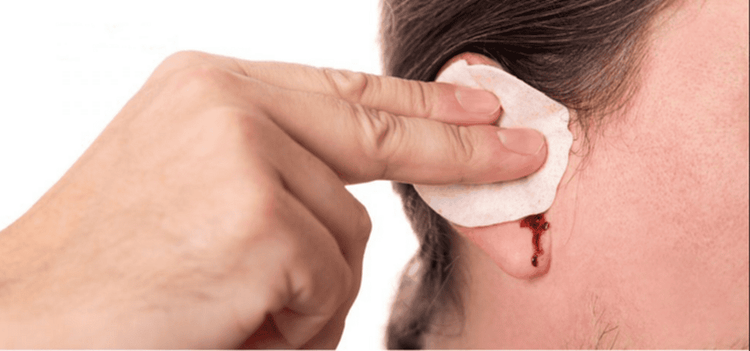
Wipe the ear area, around the patient's ear thoroughly, wash the ear lobe, ear canal with sterile water and sprinkle with antibiotic powder. If the patient is in shock, anti-shock should be given first. Study the path of the shrapnel, assess the wound and assess the extent of the damage. Surgery: Aim to remove foreign body; relieve the causes of compression such as foreign bodies, blood clots, crushed bones; treatment and prevention of infections. The surgical method depends on the wound. If the shrapnel is in the ear canal, make an incision behind the ear from back to front; if the wound is in the middle ear, surgery in the mastoid area should be drained; if the wound is stony, it should be enlarged to remove all foreign bodies; If the wound is in the mastoid bone, surgery on the mastoid bone. People with this type of ear injury may experience complications: Affected hearing function, temporomandibular joint adhesions, deformed auricle, ear canal, nerve paralysis,...
3. Treatment of nose trauma
The nose is the most common place for injury because it is located in the middle of the face and is the most prominent. There are many types of nasal trauma and each type will have a different treatment. Specifically:3.1 Injury to the nasal pyramid (closed nose injury) Common causes of nasal pyramidal injury are: Work accidents, traffic accidents, sports accidents, being beaten or thrown hard objects into the nose , picking your own nose, putting a foreign object in your nose, the environment is too dry or too cold, blowing your nose strongly continuously, exercising too much, high blood pressure, severe nasal allergies, the effect of some drugs,. ..
Symptoms of closed nose trauma include: Nosebleed, stuffy nose, swollen nose tower, scratched or bruised skin of the bridge of the nose, crooked nose bridge, collapsed bridge of the nose, cerebrospinal fluid draining out of the nose, with sharp pain points. on the bridge of the nose, the nose is abnormally moved, the nose has a crackling or bone crunching sound,...
Diagnosis of closed nose trauma is mainly based on clinical symptoms, X-ray of the nose, and CT scan. scan the facial bones. The treatment is as follows:
Immediate emergency: Apply cold compresses of the nose. If the patient has a lot of nosebleed, then have the patient sit with the head tilted forward, breathe slowly through the mouth and squeeze the two nostrils for 10-15 minutes to stop the bleeding. At the same time, give the patient a pain reliever. In case of nasal pyramidal cartilage injury: No need to correct. When the patient's swelling is gone, if there is still a lot of crookedness, he will be indicated for surgery to correct the nasal septum. In case of broken nasal bone: The doctor appoints to correct the main bone of the nose when the patient has a very clear crooked nose and severe nasal congestion on one side. Time to perform correction 3-5 days after the injury, no more than 2-3 weeks to ensure the effect. In case of nasal septum hematoma: Need to perform aspiration and incision to drain the hematoma. Doctors prevent the risk of infection causing necrosis of the septal cartilage. CSF leak into the nose: It is necessary for the patient to stay in the hospital, stay in bed. Next, lumbar puncture after 5 days to diagnose meningitis. If the patient does not spontaneously stop the CSF bleeding, a meningeal patch at the floor of the skull is required.
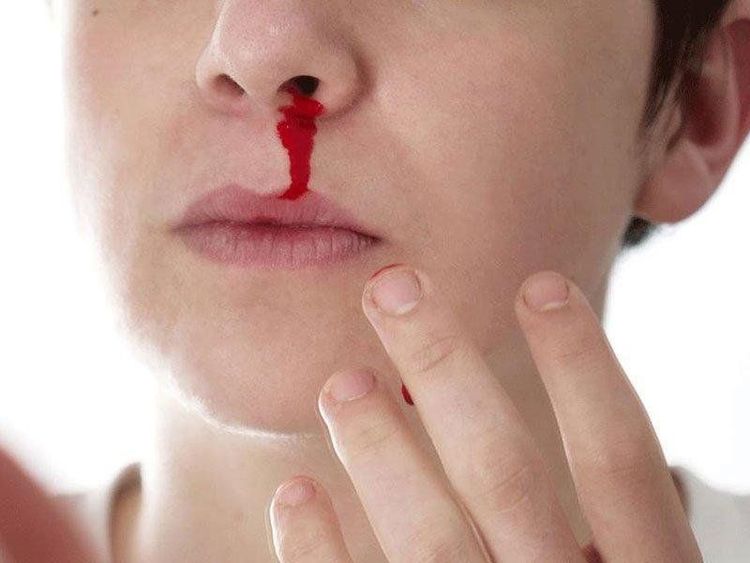
Diagnosis of trauma based on clinical symptoms, panoramic dental X-ray and CT scan. Treatment includes:
Immediate emergency: Intubation or tracheostomy; keep the patient in a lying position, keep warm; anti-shock fluids, blood transfusion; give the patient antibiotics to prevent infection; liquid diet. In case of mandibular fracture: Specify the jaw fixed column. In case of fracture of the midface bone block: When there is a lot of displacement, surgery is indicated (external fixation or screw brace). 3.3 Injury to the open nose The main causes of injury are traffic accidents, work accidents, sports accidents, being bitten by a cat or dog or having their nose cut off by a sharp object. Symptoms are partial loss of nasal structure (skin, cartilage, bone), pain, bleeding.
Treatment of open nose trauma includes:
Stitch the wound. Clean and sew up the broken part if it can be kept. Rhinoplasty surgery. Use antibiotics to prevent infection, vaccinate patients against tetanus.
4. Treatment of oropharyngeal trauma
Causes of trauma to the throat and mouth can be: bullets, traffic accidents, bleeding after tonsillectomy, children falling while holding hard objects, other people poking foreign objects into the baby's mouth,... Patients with damaged teeth, tongue, hard palate, soft palate, tonsils, posterior pharyngeal wall, internal carotid artery and cervical nerve injury.Symptoms of throat - mouth trauma are: Bleeding from the mouth, difficulty swallowing, painful swallowing, difficulty speaking and breathing. The diagnosis of the lesion will be based on clinical symptoms, lateral neck X-ray and CT scan of the neck.
To manage and treat patients with oropharyngeal trauma, including: Anti-suffocation, local bleeding and giving the patient antibiotics to prevent infection. Most cases will heal on their own after treatment. However, some other cases may have complications such as lateral (or posterior) pharyngeal hematoma, lateral (or posterior pharyngeal) abscess, internal carotid artery damage, eyelid drooping, pupil dilation, hemiplegia ,...
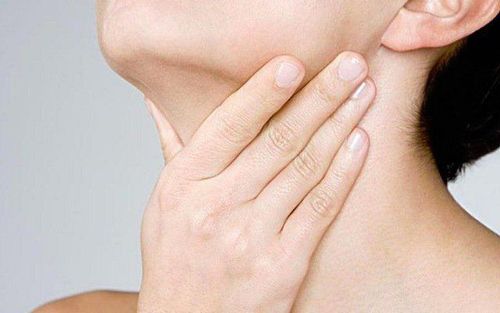
Vinmec International General Hospital is a high-quality medical facility in Vietnam with a team of highly qualified medical professionals, well-trained, domestic and foreign, and experienced.
A system of modern and advanced medical equipment, possessing many of the best machines in the world, helping to detect many difficult and dangerous diseases in a short time, supporting the diagnosis and treatment of doctors the most effective. The hospital space is designed according to 5-star hotel standards, giving patients comfort, friendliness and peace of mind.
Please dial HOTLINE for more information or register for an appointment HERE. Download MyVinmec app to make appointments faster and to manage your bookings easily.






